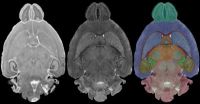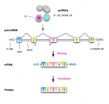(Press-News.org) Laxenburg, Austria – 26th October 2010 --
A new assessment of future scenarios that limit the extent of global warming cautions that unless current imbalances in R&D portfolios for the development of new, efficient, and clean energy technologies are redressed, greenhouse gas (GHG) emission reduction targets are unlikely to be met, or met only at considerable costs.
The study identifies energy efficiency as the single most important option for achieving significant and long-term reductions in GHG emissions, accounting for up to 50 percent of the reduction potential across the wide range of scenarios analyzed. However, investment in energy efficiency R&D has typically been less than 10 percent of the overall public sector R&D budget in the countries of the International Energy Agency (IEA). Conversely, although nuclear energy accounts for less than 10 percent of the GHG emission reduction potentials across all scenarios, it has received some 50 percent of the total public investment in energy technology R&D.
The analysis, conducted by Drs' Arnulf Grubler and Keywan Riahi from the International Institute for Applied Systems Analysis (IIASA), Austria, and published in the inaugural issue of the journal Carbon Management (2010 1(1):79-87), compared historical and current government spending on R&D by the 28 member countries of the International Energy Agency, with a "needs"-based analysis of the technologies required to achieve long-term climate stabilization. The assessment is based on the analysis of a wide range of scenarios of future technology deployment rates under a range of future uncertainties and climate constraints.
"Current investments in energy technology R&D by the public sector, in all industrialized countries, are heavily biased in favor of nuclear energy, to the detriment of energy efficiency research," says IIASA energy expert, Dr Keywan Riahi. "Given their respective importance for future climate mitigation this is a significant imbalance. Based on current investments, we estimate that a five-fold increase in investment in energy efficiency is needed to address this imbalance. Importantly, if the current rate and allocation of investment in energy R&D is maintained there is a high chance that technology development will be insufficient to meet stringent GHG reduction targets."
While technological development is critical the authors also emphasize the need for accompanying market deployment incentives for an aligned and consistent technology policy framework.
"The drastic emission cuts required to limit climate change will only be possible if we can achieve a major a transformation of the energy system," adds IIASA co-author Arnulf Grubler. "This will require the adoption of a range of policies and measures beyond an expanded and restructured energy technology R&D portfolio to include incentives for niche market applications and the large-scale deployment of climate-friendly technologies."
Because the future is inherently uncertain, the study uses a range of scenarios -22 in total - to examine what successful, or unsuccessful adoption of different technologies (such as nuclear or carbon capture and sequestration) might achieve for reducing GHG emissions. The scenarios include a "do nothing" or business-as-usual scenario, where, for example, R&D policies remain uncoordinated and market incentives for new technologies to minimize emissions remain unchanged. The study concludes that a business-as-usual approach to energy technology R&D will make combating climate change very difficult and more costly, reducing both the likelihood of success and the political and social acceptability of a transition to climate-friendly, energy-efficient technologies.
Based on the scenarios the authors outline a forward looking energy R&D 'portfolio' that they propose would provide the best hedging strategy for making sure future GHG emissions can be actually reduced and at reasonable costs. In order to achieve this goal currently unbalanced energy technology R&D portfolios need to change, reflecting the respective "option value" for future GHG mitigation of different options, which are particularly large for energy efficiency (Figure 1).
The study focused primarily on public or government-funded, R&D but the authors say the findings in terms of energy technology investment is similar to that of private sector investment, where there is a similar preference for large-scale supply-side energy technology investments, to the detriment of energy efficiency.
INFORMATION:
For more information or interviews contact:
Keywan Riahi: IIASA, Austria
Tel: +43 (0) 2236 807 491
E-mail: riahi@iiasa.ac.at
Arnulf Grubler: IIASA, Austria
Tel: +43 (0) 2236 807 470
E-mail: gruebler@iiasa.ac.at
or arnulf.grubler@yale.edu
Leane Regan: IIASA, Austria
Tel: +43 (0) 2236 807 316, Mob: +43 664 443 0368
E-mail: regan@iiasa.ac.at
END
ITHACA, N.Y. – The human hand is an amazing machine that can pick up, move and place objects easily, but for a robot, this "gripping" mechanism is a vexing challenge. Opting for simple elegance, researchers from Cornell University, University of Chicago and iRobot have bypassed traditional designs based around the human hand and fingers, and created a versatile gripper using everyday ground coffee and a latex party balloon.
They call it a universal gripper, as it conforms to the object it's grabbing rather than being designed for particular objects, said Hod Lipson, ...
In scientific publishing, how much reuse of text is too much? Researchers at the Virginia Bioinformatics Institute at Virginia Tech and collaborators have shown that a computer-based text-searching tool is capable of unearthing questionable publication practices from thousands of full-text papers in the biomedical literature.
The first step in the process is to find out what is restated before zeroing in on who may have crossed an ethically unacceptable threshold. The findings, published in PLoS ONE, offer hope for curbing unethical scientific publication practice, ...
VIDEO:
This video contains more on the pediatric bone cancer preclinical study.
Click here for more information.
BOSTON - Researchers have identified an important signaling pathway that, when blocked, significantly decreases the spread of pediatric bone cancer.
In their study, researchers at The University of Texas MD Anderson Children's Cancer Hospital in Houston found that blocking the Notch pathway in mice decreased metastases in the lungs 15-fold. The results of ...
DURHAM, N.C. – The most detailed magnetic resonance images ever obtained of a mammalian brain are now available to researchers in a free, online atlas of an ultra-high-resolution mouse brain, thanks to work at the Duke Center for In Vivo Microscopy.
In a typical clinical MRI scan, each pixel in the image represents a cube of tissue, called a voxel, which is typically 1x1x3 millimeters. "The atlas images, however, are more than 300,000 times higher resolution than an MRI scan, with voxels that are 20 micrometers on a side," said G. Allan Johnson, Ph.D., who heads the ...
PHILADELPHIA - When most genes are transcribed, the nascent RNAs they produce are not quite ready to be translated into proteins - they have to be processed first. One of those processes is called splicing, a mechanism by which non-coding gene sequences are removed and the remaining protein-coding sequences are joined together to form a final, mature messenger RNA (mRNA), which contains the recipe for making a protein.
For years, researchers have understood the roles played by the molecular machines that carry out the splicing process. But, as it turns out, one of those ...
Even if a woman is perfectly clear in expressing sexual interest or rejection, young men vary in their ability to remember the cues, a new University of Iowa study shows.
Overall, college-age men were quite good at recalling whether their female peers – in this case, represented through photos – showed interest. Their memories were especially sharp if the model happened to be good looking, dressed more provocatively, and conveyed interest through an inviting expression or posture.
But as researchers examined variations in sexual-cue recall, they found two noteworthy ...
VIDEO:
Boston College DeLuca Professor of Biology Marc A.T. Muskavitch discusses his latest malaria research, published in the journal Science. Muskavitch and an international team of researchers developed the first high-resolution...
Click here for more information.
CHESTNUT HILL, Mass. (10/25/2010) – The development and first use of a high-density SNP array for the malaria vector mosquito have established 400,000 genetic markers capable of revealing new insights into how ...
Thanks to a microwave oven, the fundamental nanotechnology process of self assembly may soon replace the lithographic processing use to make the ubiquitous semi-conductor chips. By using microwaves, researchers at Canada's National Institute for Nanotechnology (NINT) and the University of Alberta have dramatically decreased the cooking time for a specific molecular self-assembly process used to assemble block copolymers, and have now made it a viable alternative to the conventional lithography process for use in patterning semi-conductors. When the team of chemists and ...
Turning up the heat might be the best thing for athletes competing in cool weather, according to a new study by human physiology researchers at the University of Oregon.
Published in the October issue of the Journal of Applied Physiology, the paper examined the impact of heat acclimation to improve athletic performance in hot and cool environments.
Researchers conducted exercise tests on 12 highly trained cyclists -- 10 males and two females -- before and after a 10-day heat acclimation program. Participants underwent physiological and performance tests under both ...
HOUSTON, Oct. 25, 2010 – Some unexpected effects of lead exposure that may one day help prevent and reverse blindness have been uncovered by a University of Houston (UH) professor and his team.
Donald A. Fox, a professor of vision sciences in UH's College of Optometry (UHCO), described his team's findings in a paper titled "Low-Level Gestational Lead Exposure Increases Retinal Progenitor Cell Proliferation and Rod Photoreceptor and Bipolar Cell Neurogenesis in Mice," published recently online in Environmental Health Perspectives and soon to be published in the print ...



